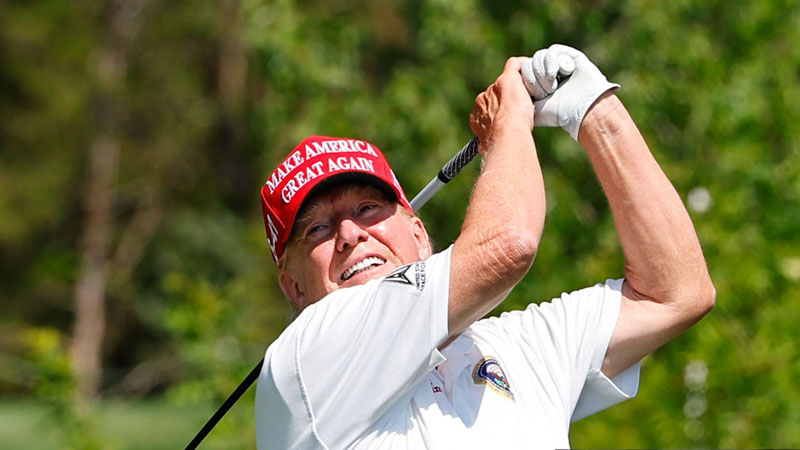A provocative new statue on the National Mall has ignited fierce criticism from the Trump administration, with White House officials decrying the artwork as offensive and disrespectful. Standing at 8 feet tall, the statue—titled “Dictator Approved”—features a gold-painted hand crushing a miniature replica of the Statue of Liberty.
The piece was unveiled in response to last weekend’s protests against President Donald Trump’s highly contentious military parade. According to The Washington Post, the statue aims to highlight Trump’s perceived admiration for authoritarian figures, including Russian President Vladimir Putin, North Korean leader Kim Jong Un, and Chinese President Xi Jinping.
The Trump White House has swiftly condemned the sculpture. “If these Democrat activists were living in a dictatorship, their eyesore of a sculpture wouldn’t be sitting on the National Mall right now,” White House spokesperson Abigail Jackson told The Washington Post. She further criticized the installation as “ugly,” suggesting it exemplifies the type of protest only possible in a free society—ironically, the very kind the sculpture appears to defend.
The statue is not the first politically charged artwork to appear in Washington, D.C. during Trump’s presidency. In fact, it follows a growing trend of protest art aimed at criticizing the administration. During this year’s Flag Day demonstrations, protestors displayed another 8-foot sculpture depicting Trump seated on a toilet. This piece drew attention for its unflattering portrayal and crass symbolism.

Last year, several other protest installations were erected, including a basketball-sized feces sculpture and a plaque bearing the message: “In honor of a lifetime of sexual assault.” The plaque featured quotes from the now-infamous Access Hollywood tape, further intensifying the backlash against Trump’s history and behavior.
Supporters of the latest statue say it serves as a necessary and powerful visual statement in a time of increasing political polarization. The artist, who remains anonymous, reportedly intended the sculpture to be both provocative and symbolic, drawing a clear line between democracy and authoritarianism.
Still, the Trump administration insists the artwork is little more than a partisan stunt meant to inflame rather than inform. While no official action has been taken to remove the statue, its presence has once again thrust the intersection of politics, protest, and public art into the national spotlight.
As debate continues to swirl around “Dictator Approved,” one thing is certain: the battle over how Trump is portrayed—both by his supporters and his critics—shows no signs of slowing down.

